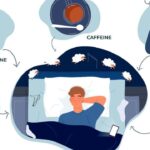Avian influenza A(H5N1) is an acute, highly contagious disease caused by the type A influenza virus. While it poses a significant threat, it is a controllable and preventable illness. This article aims to explore the characteristics of this avian influenza and effective preventive measures.
1. Avian Influenza A(H5N1) and Transmission Pathways
1.1 What is Avian Influenza A(H5N1)?
Avian influenza A(H5N1) is a highly dangerous acute infectious disease in poultry caused by the H5N1 strain of the type A influenza virus, belonging to the Orthomyxoviridae family.
The H5N1 strain is particularly hazardous due to its noteworthy characteristics, including:
– Rapid genetic variation and high pathogenicity
– Genomic elements from various animal viruses
– High transmission rate
– Direct transmission from infected poultry to humans
– Survival for up to 6 days in poultry feces at 37°C, at least 35 days at 4°C, and for several years in frozen environments.
Notably, the virus can cross into humans, posing varying degrees of health threats.

H5N1 birrl flu can asily spread when humans directly interact with infected poultry and their waste
1.2 Transmission Routes of A/H5N1 in Humans
– Direct contact with poultry: Virus A/H5N1 can easily spread when humans directly interact with infected poultry and their waste during farming, transportation, and slaughtering. Even contact with apparently healthy poultry carrying the A/H5N1 virus can lead to infection.
– Foodborne transmission: Failure to adhere to proper food safety regulations increases the risk of infection. Consuming raw or undercooked poultry products, such as blood, eggs, and meat, from infected poultry poses a significant risk.
– Airborne transmission: As an airborne virus, A/H5N1 can spread through respiratory droplets when infected individuals sneeze or produce respiratory secretions containing the virus. Cold winter weather conditions favor the airborne transmission of A/H5N1, contributing to potential outbreaks.
2. Symptoms of Avian Influenza A(H5N1) in Humans
Early symptoms of avian Influenza A(H5N1) typically appear within 2-5 days after infection and may include:
– Sudden high fever exceeding 38°C
– Chest pain
– Difficulty breathing

Typical symptom of avian flu
Additional symptoms may include:
– Dry cough
– Headache
– Body aches
– Fatigue
– Abdominal pain
– Nausea
– Diarrhea
3. Complications of Avian Influenza A(H5N1)
Avian influenza A(H5N1) progresses rapidly and can lead to complications such as:
– Conjunctivitis
– Respiratory system damage (bronchopneumonia, pneumonia, upper respiratory tract infections, respiratory failure, etc.)
– Neurological damage (brain edema, lymphocytic meningitis,. etc.)
– Multiple organ failure
– Immune system suppression
– Pericarditis
– Myocarditis
– Disseminated intravascular coagulation, etc.
Therefore, prompt medical attention is crucial when experiencing warning signs of avian influenza A(H5N1) to prevent severe complications and potential life-threatening consequences.
4. Treatment of Avian Influenza A(H5N1)
Upon detecting influenza A virus subtype H5N1 infection, immediate medical care within the first 48 hours of symptom onset is essential to limit disease severity. Antiviral medication such as oseltamivir (Tamiflu) is commonly used to reduce the severity of symptoms and decrease the risk of mortality.
For symptomatic relief, patients may also receive medications to manage high fever, cough, joint pain, as prescribed by a healthcare professional.
When receiving home-based care, patients should adhere to the prescribed medication regimen and take additional measures, including:
– Prioritizing rest and relaxation
– Maintaining a well-ventilated environment with moderate room temperature
– Practicing personal hygiene, including regular gargling with saline solution and proper nasal irrigation
– Consuming cooked and boiled foods, ensuring a balanced diet with adequate nutrition
– Staying hydrated by drinking plenty of water.

Depending on the patient’s condition, doctors will provide appropriate treatment regimens and recommendations to prevent spread.
5. Prevention of Avian Influenza A(H5N1)
Currently, specific antiviral drugs for A/H5N1 prevention and treatment are still under research. Therefore, focus is placed on personal hygiene, food safety, minimizing contact with infected individuals and poultry, and enhancing overall health.
5.1 Healthcare Facility Prevention Measures
Utilize protective equipment, including masks, goggles, hats, and protective clothing when directly interacting with patients or their belongings.
5.2 Community Prevention Measures
Personal hygiene and food safety:
– Daily throat gargling and nasal disinfection
– Avoiding the consumption of poultry or poultry products known to be infected
– Thoroughly cooking poultry and its products
Limiting contact with potential sources of infection:
– Avoiding contact with sick individuals or infected poultry
– Wearing a medical mask, goggles, hat, and practicing hand hygiene before and after contact with patients
Enhancing overall health for effective prevention:
– Maintaining a balanced diet, adequate rest, and regular physical exercise
– Seeking immediate medical attention when experiencing acute respiratory symptoms, such as high fever, difficulty breathing, headache, muscle pain, fatigue, sore throat, or cough. Avoid self-neglect and promptly seek medical care to ensure a timely and effective response.
In conclusion, avian influenza A(H5N1) poses a significant public health threat, but with comprehensive knowledge of transmission pathways, early detection, and appropriate prevention measures, the impact of the disease can be minimized. Vigilance, prompt medical care, and public health initiatives play a crucial role in controlling and preventing the spread of avian influenza A(H5N1).








